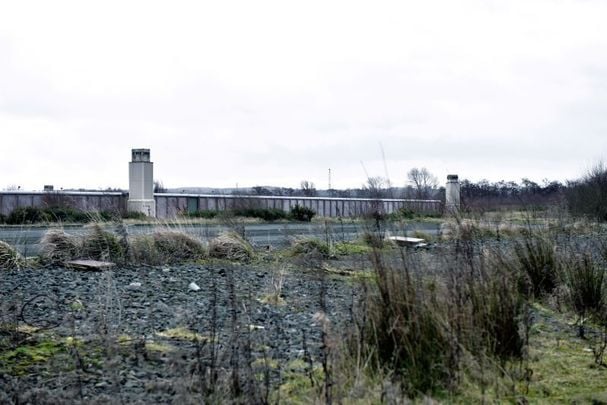The Irish Republican Army (IRA) organized the escape of 38 prisoners from Maze Prison in Lisburn, Northern Ireland, on September 25, 1983. Maze Prison was seen by many as Europe’s most secure prison. It was a prison within a detention center within an army camp and believed to be completely impenetrable by any one prisoner. That was until September 1983, when the IRA successfully pulled off the largest prison escape in British and Irish history.
*(If you would prefer to listen to this story rather than read it, be sure to check out The Troubles Podcast. It’s available anywhere you get your podcasts or by clicking here.)*
### Background: Maze Prison and Internment
Maze Prison was opened in 1971 after the Royal Ulster Constabulary (RUC) and British Army introduced **Operation Demetrius** in Northern Ireland. This saw the mass arrest and internment of 350 Irish people suspected of being involved with the IRA. This policy of internment without trial continued until 1975.
It turned out that many of those detained in this first wave of arrests had little to no connection with the IRA. The main IRA suspects had been tipped off and managed to avoid arrest. It is believed that soldiers used wrong or out-of-date information when making their arrests.
The mass arrests caused a huge amount of violence and anger in the Nationalist community. There have been claims that soldiers smashed their way into people’s homes without warning. There were four days of clashes during which 20 civilians, two IRA members, and two British soldiers were killed.
Those arrested were held without trial in Nissen Huts (army-style barracks) at a disused Royal Air Force airfield, which became the **Long Kesh Detention Centre**. The huts were makeshift structures and not suitable for long-term detention.
The centre was then renamed **Her Majesty’s Prison Maze**, situated in the township of Maze. In 1976, eight new blocks were added to the prison, known as **H Blocks**, shaped like the capital letter H. These housed those convicted of scheduled terrorist offences.
Though loyalists were also arrested, they were the minority. By 1975, there were 1,981 people in Maze, with 107 of them loyalists. The rest were Republicans.
### Prison Layout and Security
Each H Block housed four self-contained prisons called wings, controlled from the “circle,” or the center of the H. The entire prison was surrounded by a 15-foot fence, with each H Block enclosed by a 5.5-meter high concrete wall topped with barbed wire. All gates were made of solid steel and electronically operated. The prison was considered impenetrable.
### The Political Context: Special Category Status and Protests
IRA and INLA members arrested viewed themselves as prisoners of war and believed it was their duty to escape. They refused to be treated as regular inmates, fighting for Special Category Status. This status meant prisoners didn’t have to wear uniforms or do prison work, among other privileges.
Inmates in Northern Ireland had been granted this status in 1972, but it was revoked in 1976 by Labour Party Secretary of State Merlyn Rees. When Margaret Thatcher became Prime Minister in 1979, she doubled down on the policy. In a speech delivered in Belfast on March 5, 1981, she said:
> “There is no such thing as political murder, political bombing, or political violence. There is only criminal murder, criminal bombing, and criminal violence. We will not compromise on this. There will be no political status.”
Prisoners arriving after March 1976 were not granted Special Category Status, leading to major outcry. By 1978, nearly 300 Irish Republicans refused to wear prison uniforms, opting instead to wear their bed blankets.
The British government refused to back down. Irish Republicans then began a **dirty protest**, covering cell walls with excrement. Prisoner Pat McGeown described the harrowing conditions:
> “There were times when you would vomit. There were times when you were so run down that you would lie for days and not do anything, with maggots crawling all over you. The rain would be coming in the window and you would be lying there with maggots all over the place.”
### Violence Outside and Hunger Strikes
Outside Maze, the IRA Army Council communicated with IRA prisoners, who asked them to start assassinating prison officers. Over five years during these strikes, 19 prison officers were killed outside the prison.
In 1981, prisoners began the infamous **hunger strike**, during which ten men lost their lives, including Bobby Sands, who is covered i
https://www.irishcentral.com/roots/history/ira-maze-prison



